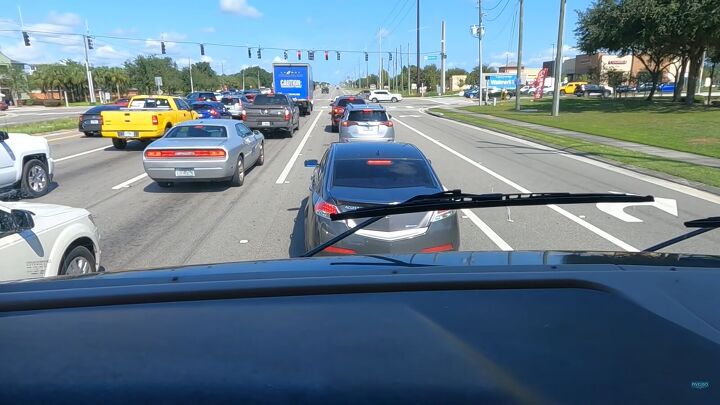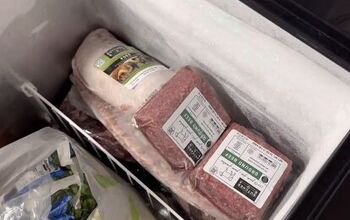RV Driving: How to Say Goodbye to Stress and Hello to Adventure!

Today we’re going to give some tips on driving RVs. We’ll discuss maneuvering at low speeds, driving on the road, making turns and backing into campsites.
Driving an RV is different than driving a regular car, so we hope these tips will keep you educated and safe on your journey.
1. Pre-Driving Checklist
Before hitting the road, take the time to go through a pre-driving checklist to ensure that everything is taken care of.
This includes stowing away any loose items and making sure that everything is locked up and secured before you start your journey. By doing this, you can ensure a safer and more comfortable ride for yourself and your passengers.
2. Safe RV Driving in Campgrounds
When driving through campgrounds in your RV, it is important to prioritize safety by following these tips:
Drive slow
It's crucial to take your time when driving through campgrounds. By going slow, you'll have more time to react to any obstacles or hazards.
Check for trees
Keep an eye out for low-hanging tree branches or other overhead obstacles that could damage your RV. Some parks may not do a great job of trimming trees, so it's up to you to stay alert.
Know your RV's height
It's essential to know your RV's height to avoid collisions with low-hanging branches or structures.
Watch out for corners, signs, and other RVs
Be mindful of the layout of the campground and watch out for any potential obstacles, including signs that may be located on corners.
3. Safe Braking Distances for RVs
Ensure a safe and enjoyable driving experience in your RV with these braking tips:
Give yourself plenty of braking distance
An RV is a big and heavy vehicle that weighs around 26,000 pounds or more. Despite having big brakes, it's essential to give yourself plenty of room to slow down and come to a complete stop safely.
Don't cut in front of larger vehicles
If you are a non-RV driver, avoid cutting in front of RVs, big trucks, or any large vehicles towing objects. These vehicles require a longer time to slow down, so it's best to maintain a safe distance.
Start slowing down early
When approaching a red light, it's crucial to start slowing down early. Misjudging your distance and slamming on the brakes can be dangerous and may cause items inside the RV to become unsecured and fly forward. Give yourself plenty of time to slow down gradually.
4. Dealing with Other Drivers on the Road
When driving a big rig, it's important to be aware of other drivers on the road and follow these tips to stay safe:
Be prepared for other drivers trying to get around you
Drivers in smaller vehicles may try to cut in front of you to avoid being stuck behind an RV. If you see someone approaching a corner or intersection, assume they may cut you off and be prepared to slow down.
Consider getting a steering stabilizer for your motorhome
If you're driving a big motorhome, a steering stabilizer can make a significant difference in your driving experience. It can help you feel more confident and in control while on the road.
5. Understanding Tail Swing:
When it comes to driving a motorhome, one of the most important things to understand is tail swing. This occurs when the rear of the vehicle swings out in the opposite direction of a sharp turn, and it can pose a serious risk in tight quarters such as gas stations. Here are some tips for maneuvering a motorhome to avoid tail swing accidents:
First, keep in mind that motorhomes are easier to maneuver than trailers since you don't have anything trailing you that's going to cut the corner. However, you still need to turn a little bit wider since you're much longer than a standard vehicle.
Pay attention to your back corners when turning, as the tail of a motorhome is from the rear axle to the back of the rig. When you drive sharply around a corner, the front wheels turn and that rear axle becomes a pivot point, causing everything behind it to swing out in the opposite direction.
To avoid hitting obstacles around gas pumps or other tight quarters, take a gentle turn or give yourself some distance before turning away from them. Cranking the wheel and turning sharply can cause the rear of the motorhome to swing out several feet, putting you at risk of hitting something.
6. Driving with a Tow:
When it comes to towing a trailer, there are some important things to keep in mind to ensure a safe and smooth ride.
Towed vehicles track really well inside the lines because they're shorter compared to the length of the motorhome. Hence, you don't have to worry as much about your towed vehicle following you along.
However, there are still a few precautions to take:
Brakes and Setup
The main thing to worry about when towing is whether the brakes are working. It's essential to ensure that the trailer is in neutral and ready to go. Exact details on how to set up the tow will depend on the type of vehicle, so be sure to check your manuals to get all that stuff set up correctly.
Driving Over Bumps
One thing to be mindful of when driving with a tow is going over big bumps, especially since your hitch is probably going to be low.
If you're towing an SUV, it will be up a little higher, but with a car, the hitch is low. So, if you are going over dips or bumps, there's a good chance that it will scrape. It's best to go slow to reduce the amount of bounce and avoid damage to your vehicle.
7. Tips for Backing into a Site
Backing your RV into a site can be a challenge, here are some tips to make the experience a smooth one:
Watch your Corners
Always be aware of your surroundings and watch your corners. Look up to ensure there's nothing overhanging like branches that can damage your RV.
Have a Spotter
It's important to have a spotter when backing up. Use walkie-talkies or cell phones to guide the driver. As the spotter, you are the driver’s eyes. Be patient with the driver because they can't see what you see.
It's helpful if the driver comes out of the vehicle first before backing up to inspect the site so they know what they're backing into.
Clear Communication
When you are the spotter, it's important to provide clear and precise directions to the driver. Establish a system of communication before backing up.
Instead of saying ‘left and right’, use ‘passenger side and driver's side’ to avoid confusion. Using words like ‘passenger’ and ‘driver’ to indicate direction is a helpful way to guide the driver.
Tips for Driving an RV
We hope these RV driving tips and tricks have been helpful to you. If you have any questions or ideas, leave us a comment. Be safe out there.



























Comments
Join the conversation
Backing up towed vehicles are evil. I could never get it. It’s like trailer had a mind of its own.